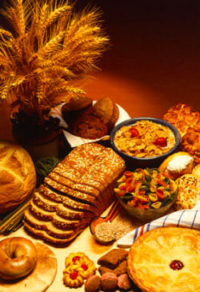Paleo Diet Linked with Increased Heart Disease Risk
The “Paleo Diet” is based on the idea that the human genome has not adapted to eating products of agriculture. Paleo dieters eat meat, fish, eggs, nuts, vegetables and few fruits, with no processed foods, grains or dairy products included. Short term, it may have the benefit of weight loss for some because of the sudden exclusion of refined starchy and sugary foods. But the long term picture isn’t so positive, according to a new study in the European Journal of Nutrition.
The study divided participants into groups of people consuming a strict Paleo diet, more relaxed Paleo plans and a traditional healthy diet, based on current health guidelines. The study found that because the strict paleo diet adherents ate zero whole grains, this apparently caused the increase of a compound called trimethylamine-N-oxide (TMAO) in the blood, which is associated a significant rise in cardiovascular disease risk.
The researchers attributed this negative result to the disruption in the gut microbiome caused by the lack of fiber and nutrients contained in whole grains. The gut’s microbiome is the collection of 100 million microorganisms in the digestive tract, which we now know, can make or break your health. Two recently published clinical studies confirm decades of evidence demonstrating that the nutrients and fiber in whole grains, such as whole wheat, oats, barley, rye, brown or wild rice, etc., are essential for overall well-being. They improve gut health (an emerging factor contributing to overall health), the immune system, cardiovascular health, blood sugar regulation, weight loss, and reductions in inflammation, a risk factor for diseases such as colds, arthritis, heart disease and cancer.
 How much whole grain should you be consuming? My advice would be three to four one-ounce servings daily. For instance, two one-ounce slices of whole wheat, whole oat or whole rye toast in the morning, or two slices of whole grain bread for a sandwich at lunch, would be two servings. One cup of cooked brown rice or whole grain pasta would comprise another two servings. It doesn’t take much to receive health benefits. And the calories are lower than you’d expect.
How much whole grain should you be consuming? My advice would be three to four one-ounce servings daily. For instance, two one-ounce slices of whole wheat, whole oat or whole rye toast in the morning, or two slices of whole grain bread for a sandwich at lunch, would be two servings. One cup of cooked brown rice or whole grain pasta would comprise another two servings. It doesn’t take much to receive health benefits. And the calories are lower than you’d expect.
One whole grain serving (about 70 to 100 calories) = 1 ounce dry or 1/2 cup cooked whole grain. Read more about whole grains.
Celebrate the beginning of Fall with my popular Chile Non Carne – a client favorite, and surprisingly, made with cracked wheat.
A favorite hearty salad of mine and my clients is Tabouleh with Chick Peas, Seasonal Vegetables and a Lemony Basil Vinaigrette.
For more fabulous tips and simple, effective ways to lose weight,
buy her book, Diet Simple!











